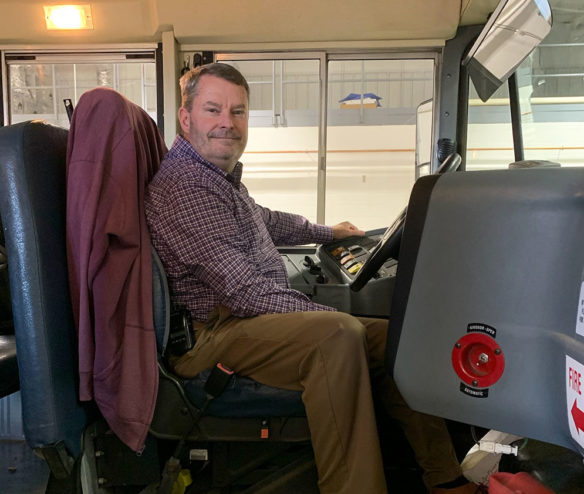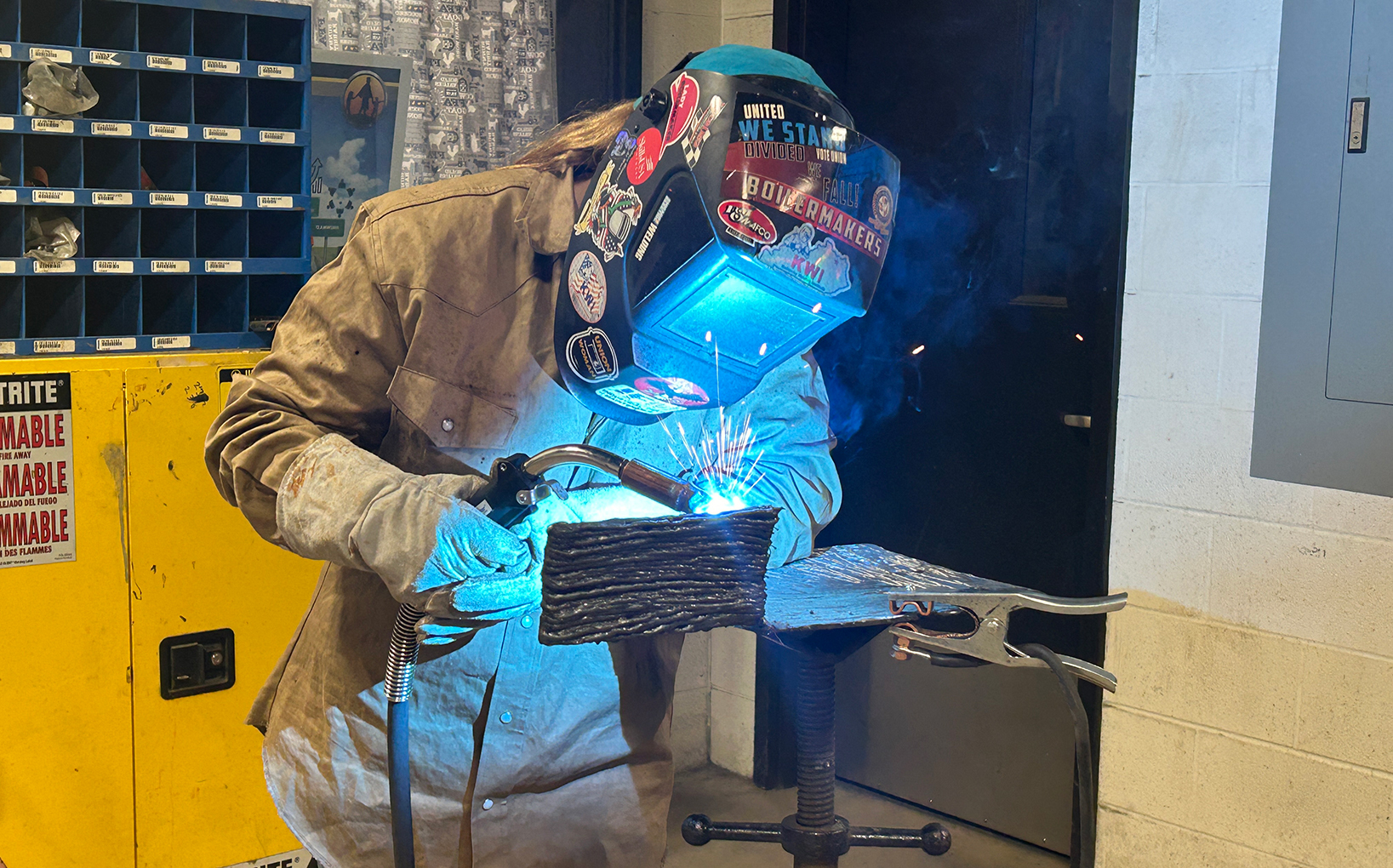
Bracken County Superintendent Jeff Aulick, seen here in the driver’s seat of a school bus, earned his commercial driver’s license (CDL) certification when he was head of transportation in Pendleton County. Now, his CDL is used to help take students home after school when Bracken County has more need of bus drivers than available substitutes.
Jeff Aulick starts his day as the superintendent of Bracken County Schools, but some days he ends it as a bus driver.
Aulick, who has been the superintendent since 2012, earned his commercial driver’s license (CDL) certification when he was head of transportation in Pendleton County. He felt it was important in order to fairly evaluate the bus drivers. Now, his CDL is used to help take students home after school when Bracken County has more need of bus drivers than available substitutes.
“My belief is that it’s an all-hands-on-deck approach,” he said. “It’s something we have to do, whatever it takes to keep kids in school. That’s the most important aspect, making sure the kids are in school, in a caring environment every day. The inconsistency of the past 16-18 months makes that even more important.”
A higher demand for CDL drivers by large companies, the retired population distancing itself from schools due to COVID, quarantines and a lengthy process for obtaining all necessary school bus driver certifications have made it difficult for districts to create consistent transportation teams.
“It’s tough getting people to drive. It’s not like you are hauling produce, it’s the most important resource our country has – our children,” said Aulick. “If people would look at it that way, they would see the difference they make every day. You are the first smiling face they see.”
School districts across the Commonwealth are in critical need, according to the answers of 109 school districts through an informal survey administered by the Kentucky Department of Education (KDE) Division of District Support. Across the state, 630 full-time bus drivers and 371 full-time substitute drivers were needed as of Jan. 12. Additionally, 126 part-time drivers, 247 part-time substitute drivers and 239 full-time monitors were needed.
Elisa Hanley, pupil transportation branch manager at KDE, said a few years ago there were over 10,000 school bus drivers in the database. Now, there are only 8,842. Even when there were higher numbers, not all the registered drivers drove a bus daily. Some were coaches or teachers who drove for their teams or field trips.
“This shortage is going to take time to fix and the effects will be felt for months after people are hired due to the training required to become a school bus driver,” said Hanley. “School bus drivers are professional drivers with a CDL and are certified to be Kentucky school bus drivers. We don’t just hand over the keys to anyone – not with our most precious cargo being transported.”
The basic requirements for school bus drivers in Kentucky are having a CDL with a passenger and school bus endorsement, a physical signed by an individual listed on the National Registry of Certified Medical Examiners, and a high school diploma, G.E.D. certificate or demonstrated progress toward obtaining a G.E.D. Other requirements vary by district.
Hanley is working with the state Education and Workforce Development Cabinet to help school districts have more access to sending applicants to CDL school since there are only three companies in the state. There are currently two programs under development to find more drivers. The first is an apprenticeship program that will assist new drivers with obtaining their CDL and school bus certification. The second is a program that will connect school districts to military personnel looking to re-enter the job force.
While the statewide initiatives are being created, districts are coming up with their own creative solutions to solve their current need for bus drivers.
Breckenridge County Schools worked with School Transportation Services LLC (STS), a private business focused on transportation efficiency, to eliminate routes, thus reducing the need for drivers and monitors. STS helped Breckenridge Schools eliminate nine routes in 2021.
“The biggest issues we had was finding drivers, so by consolidating routes, it made it less of an issue,” said Dale Butler, chief information officer for Breckenridge County Schools. “If you can reduce routes, that makes it cost efficient and gives you time to get drivers with a CDL certificate. It’s a lengthy process and our biggest hiring hurdle.”
Butler recommends other school districts consider consolidating routes to save costs and deal with driver shortages.
To help cope with day-to-day shortages, Meade County Schools has a three-step process when a driver reports they cannot drive their route. The first step is using a substitute driver. If a substitute is unavailable, step two is to combine two bus routes that are close together. This option keeps students on a normal schedule and only works when there is enough room on the bus.
Step three – a last resort – is when “buddy drivers” are used. Buddy drivers are drivers who will complete their regular route in the morning and afternoon, then go on the route of their paired driver. Using this procedure means students will be late arriving at school and will leave school later in the afternoon.
Donna Foushee, director of transportation for Meade County, said bus buddies were developed during Spring 2020 when she saw potential issues due to a lack of substitute drivers. It’s a united effort between parents, cafeteria staff, administrators and transportation staff, but a necessary one to keep the doors open.
“The drivers have ridden the wheels off of the buses with how hard they have worked,” said Foushee. “They don’t complain. They want the kids in school too. They were 100% behind the bus buddies plan and I’m so thankful for them.”

To help cope with day-to-day shortages, Meade County Schools has a three-step process when a driver reports they cannot drive their route.
Hanley encourages communities to “realize how important every position is” and rally behind school districts with shortages.
“School bus drivers don’t just drive our kids to school and home, they drive them toward their future,” she said. “They make a difference in the lives of our students, and it is a vital position in our schools. If you know anyone that is willing to drive our kids into their future, please have them reach out to their local school districts. Whether here in Kentucky or anywhere nationwide. Our kids need them.”



Leave A Comment